Packaging Symbols
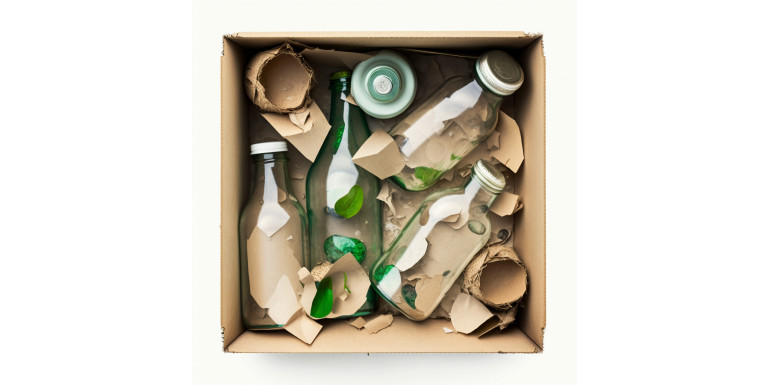
Each of us uses a certain number of sign systems. It is difficult to undermine their functionality, especially when we choose them instinctively, such as sending emoticons. Communication by means of signs does not have to take place only between the recipient and the sender. The communication intention may also be contained in the content of the sign itself. After all, there are areas where non-compliance with symbol-based regulations leads to serious consequences. Just imagine a situation where you try to join the road without knowing the road signs. Identification of marks present on packaging is not obligatory, but extremely useful.
The multitude of symbols on the packaging can cause consternation. On many glass containers, cans and containers, we will find, for example, a pictogram informing about the possibility of reusing the packaging.
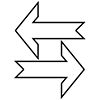
Biodegradable packaging, on the other hand, is described by a sign of a braided ribbon with a leaf, indicating that it is decomposable and compostable.

Recycling signs
As conscious consumers, we should know which products are recyclable. The popular triangle of three arrows, known as the Möbius loop, is probably the most important symbol. Almost the entire system of recycling signs is based on it.

Each material corresponds to a specific code number.
Plastic packaging is assigned numbers from 1-7.

01 - PET is a commonly used polyethylene terephthalate used e.g. for bottles and disposable packaging. Cannot be used multiple times.
02 - HDPE is a material used e.g. in the production of plastic milk bottles. It can be reused.
03 - PVC is polyvinyl chloride, usually used for the production of cling film. Under the influence of high temperature, it releases toxic compounds.
04 - LDPE is low density polyethylene. It belongs to the group of safe plastics. It is used to produce, for example, cling film and plastic bags.
05 - PP - is a reusable polypropylene, used, for example, in the production of plastic bags. Less safe than HDPE.
06 - PS - is polystyrene (i.e. polystyrene), This material has been considered dangerous in contact with food, therefore disposable packaging and containers made of PS cannot be sold in European Union countries from 2021.
07 - OTHER - the most toxic materials. They also include materials of organic origin.
Cardboard packages (PAP) describe the numbers 20 to 23.
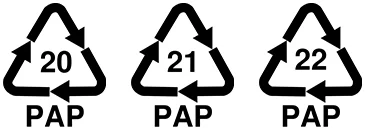
20 PAP – corrugated cardboard, cardboard, wrapping paper.
21 PAP - other mixed paper, cardboard (press, leaflets).
22 PAP - paper.
23 PAP – coated paper and cardboard (postcards, frozen food packaging, book covers).
Metals are 40 and 41.

40 FE – steel sheet (tin cans).
41 ALU – aluminum sheet (mainly beverage cans).
Aluminum packaging is also marked with a pictogram informing that the packaging is made of recyclable material.
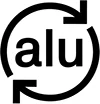
Glass packaging (GL) is a number in the range of 70-72.

70 GL – colorless glass, the simplest type available on the market.
71 GL - green glass, used e.g. for the production of wine bottles.
72 GL - brown glass.
Glass is also marked with the symbol below.

The range of numbers describing multi-material packaging depends on the dominant content of a given material, e.g. in packaging in the range 95-98 we will find mainly glass.
A popular symbol, often confused with the Möbius loop, is the green point.
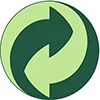
The green point is actually a service mark showing that the manufacturer has made a financial contribution to the construction and operation of the packaging waste recovery and recycling system.
Hallmark
In 2020, the European glass industry, in consultation with designers, brand owners and consumers, introduced a new symbol for glass packaging – Hallmark.

Hallmark is a communication tool to promote the unique properties of glass, such as recyclability and product quality retention.
Handling signs
An important element of the logistics process is transport. Before a product reaches the store shelves, it must be properly packed and secured. Some materials - such as glass - require special protection. To avoid breakage and loss, each package must therefore be properly labeled. The handling of the cargo unit is described by handling signs.
The most commonly used handling signs are:
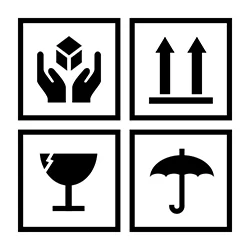
1. Handle with care - a sign placed on the packaging of goods requiring special protection against falling.
2. This side up - a sign placed on the packaging of goods that may be damaged as a result of changes in position.
3. Fragile - a sign placed on packages containing breakable goods.
4. Keep dry - a sign placed on packaging requiring protection against moisture. They must not be transported on open means of transport.
Care for the environment is the ability to make the right decisions. One of them is the issue of packaging. Knowledge of the presented signs and symbols can be beneficial not only for our health, but for the entire ecosystem.
Glasshallmark.com
https://envirocraft.co.uk/news/recycling-codes-symbols-explained
https://www.national-geographic.pl/artykul/znaki-recyklingowe-co-znacza-symbole-na-opakowaniach
https://www.shiphub.pl
https://zapakuj.to/certyfikaty-regulacje-dotyczace-opakowan





